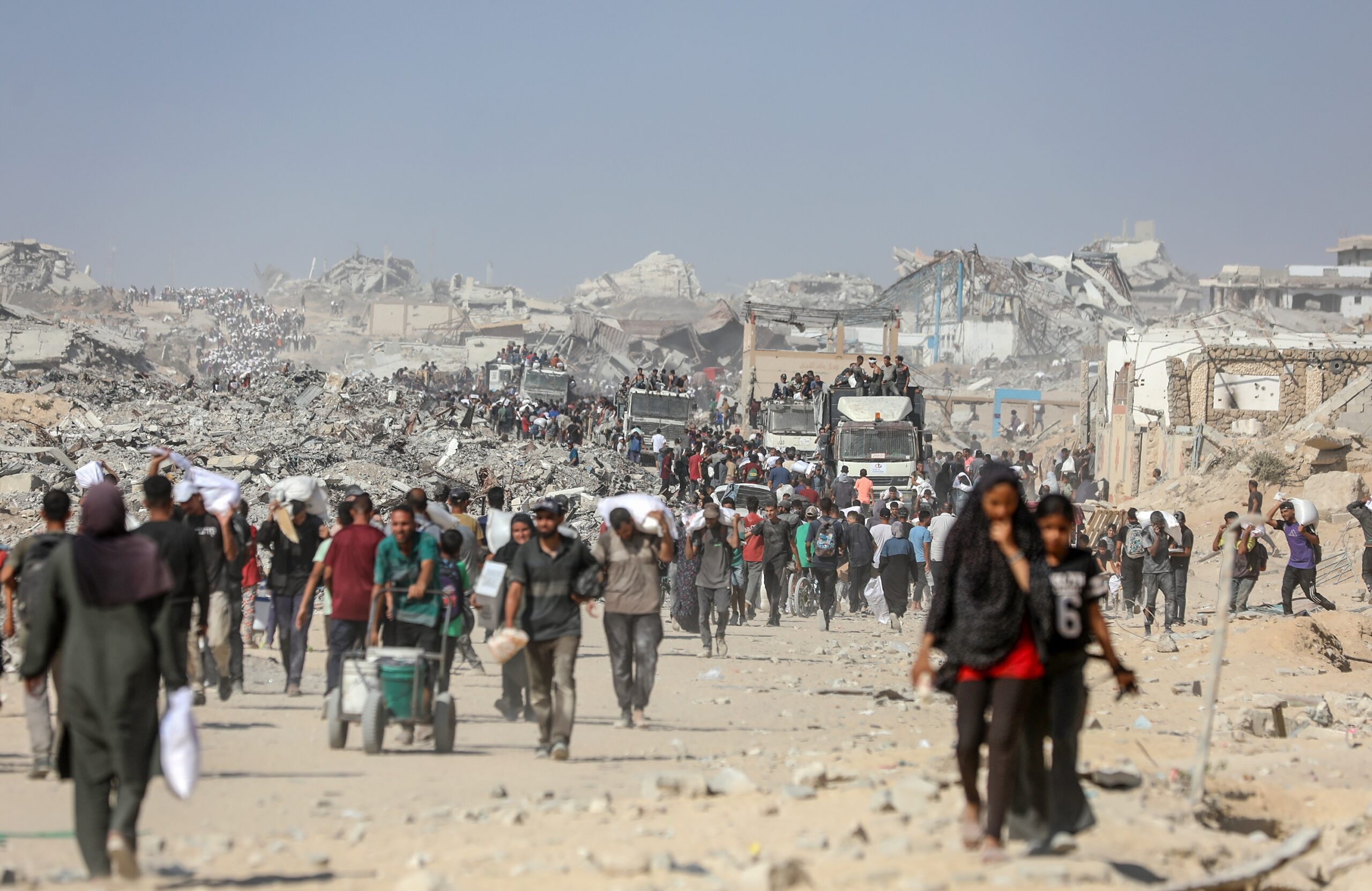Trump’s plans for a southern border wall with Mexico are well underway. Meanwhile, the US Border and Customs Protection Agency is being rewarded for its endorsement of the president with greater leeway to determine who is a priority for detention and deportation. Many are being unnecessarily hurt in the process.
Last month marked the 169th anniversary of the signing of the Treaty of Guadalupe Hidalgo between Mexico and the United States, an agreement that ceded the land of northern Mexico that now includes Texas, Arizona, New Mexico, Utah, Nevada, Wyoming, Colorado and California. These negotiations ended the US/Mexico War and after the Gadsen Purchase in 1853, the US/Mexico border—as we know it today—was formed. This divide became associated with a set of practices of inclusion and exclusion affecting citizens on both sides of the boundary and as an apparatus of genocidal warfare against the Tohono O’odham, Yaqui and other indigenous peoples.
In 2017, the United States has an administration that has relied on misinformation to re-galvanise fear of the ‘other’ to generate support for the construction of a border wall. President Donald Trump underscored that commitment in his executive order in late January that will purportedly “secure the southern border of the United States through the immediate construction of a physical wall on the southern border, monitored and supported by adequate personnel so as to prevent illegal immigration, drug and human trafficking, and acts of terrorism.”
Of course, there already is a border wall across 1,051 kilometres of the 3,219 kilometre-long stretch that has cost the United States government US$7 billion (AU$9.11 billion). In order to complete the wall, as designated by the current administration, it has been estimated that it will cost approximately US$25 billion, a figure that does not include the cost of labor. This doesn’t take into account figuring out how to construct a border wall on privately owned land or where natural barriers already exist. However, natural obstructions haven’t stopped the US Border Patrol before. In the stretch of border between San Diego and Tijuana, the Surf Fence project used US$4.3 million to erect a barrier 300 feet into the Pacific Ocean. It is baffling that the engineers believe that a steel fence can and will separate the ocean.
Breaking the bank
With the many billions of dollars that the current administration has promised to funnel into the already bloated budget of the US Border and Customs Protection Agency—already one of the largest law enforcement agencies in the world—it is no surprise that the union representing border patrol agents endorsed the president’s candidacy early on. In fact, this very union was at odds with the former chief of the US Border Patrol Mark A. Morgan, who resigned late last month after only six months in the position. Morgan was attempting to change the culture of the agency, which had for years faced allegations of an overly confrontational approach in its enforcement that resulted in multiple fatal shootings of migrants and a lack of accountability in investigating misconduct. His resignation came shortly after the current administration announced its plan to build the wall and hire 5,000 US Border Patrol agents.
Worth noting, however, is that while politicians and bureaucrats in Washington attempt to draw up support for the US$25 billion wall and further militarisation of the border with Mexico, researchers have shown that since the Great Recession, more Mexicans are leaving the US than arriving. Moreover, the economic rationale that the president has used to demonise immigrants, has been misleading and hypocritical given the fact that undocumented immigrants pay billions of dollars in taxes every year while President Trump has famously bragged about his “brilliant” strategy for dodging his duty to pay federal income tax.
The southern war zone
From a human rights perspective, the border wall and the actions of the US government surrounding its construction have been criticised for violating several international norms, including the rights of indigenous peoples, the right to private property and the right to non-discrimination. Moreover, the wall has serious long-term environmental effects that were neither investigated nor addressed properly by the US government. In 2008 alone, 36 federal laws were waived thanks to the REAL ID ACT of 2005, “to ensure the expeditious construction” of border barriers and roads. Of course, the public does not hear about this in the national or international media, nor does it recognise the wall itself as illegal due to these violations.
Furthermore, the unintended consequences of border militarisation along previously heavily trafficked areas in Southern California and Texas have funnelled migrants into the deadly Sonoran Desert. This has led to an increase in deaths, with statistics showing that migrant deaths have doubled in the last 20 years. In fact advocates accuse the US Customs and Border Protection of using the desert as a weapon against immigrants, as well as sabotaging humanitarian aid efforts and discriminating against migrants during emergency responses. Since the early 20th century, Mexican workers have provided necessary labour for US-based industries, both within the US (as conquered labour, migrant labour and guest workers) and in Mexico (as maquiladora—border factory—workers). While goods and capital are freely allowed to cross the border, people are not.
The new normal
In addition to concerns over the dubious claims surrounding the border wall, it is now abundantly clear that the US Border and Customs Protection Agency is already being rewarded for its endorsement of the president by receiving greater leeway in determining who is a priority for detention and deportation. The administration has done so, in part, by broadening the definition of ‘criminal aliens’ to include those whose sole transgression is their immigration status. During the first five years of the Obama administration, immigration agents were given similarly low bars to clear in determining priority, but that eventually changed thanks to the immense pressure put on the administration by youth activists and their allies.
The story of Guadalupe García de Rayos, the Phoenix-area mother of two US citizen children who had lived in the US for 22 years, is one of the first signs of what immigration enforcement will look like under the new administration. Guadalupe was detained and deported last month, torn from her family and community, because the recent executive order on immigration made her into ‘the worst of the worst’ due to a conviction for using a fake social security number in order to gain employment nine years ago. The challenge facing activists, families and people of conscience today is how to respond to the raids currently terrorising immigrant communities across the United States. Border walls don’t stop migration, they only criminalise the workers.
Michelle Téllez and Maurice R. Magaña are assistant professors of Mexican American studies at the University of Arizona.
This article is published under a Creative Commons Licence and may be republished with attribution.




